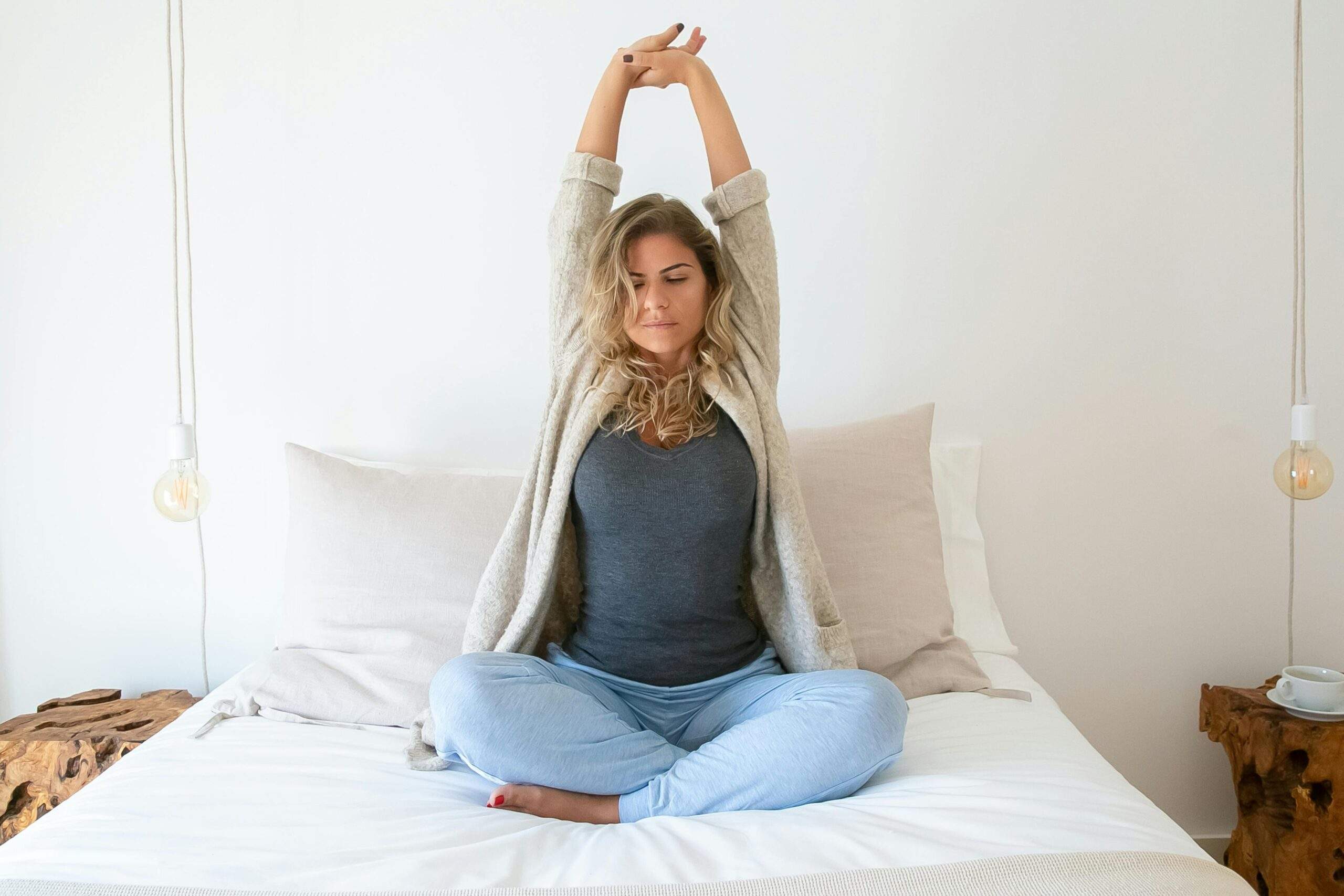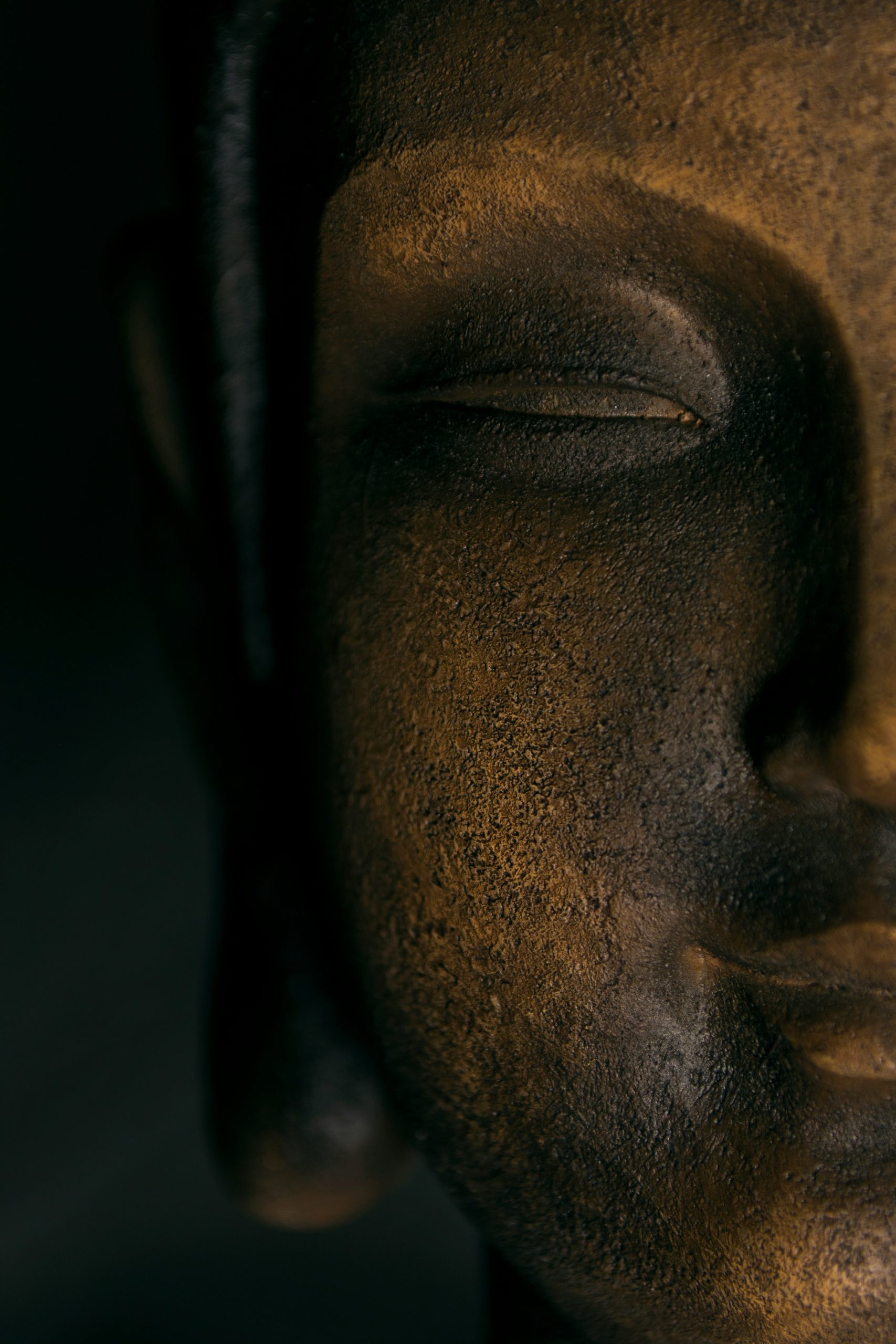How to Meditate in Bed: Start or End Your Day With This Restful Practice
Every wondered how to meditate in bed? If you want to start your day off right, or ease into sleep at night, try these meditations that you can do right in your own bed. The post How to Meditate...

While this article has been reviewed for accuracy and fairness by Mindful editors, some material in this article was generated by AI. To learn more about our AI practices and why we sometimes use AI to generate content, please see our statement here.
We often imagine a standard meditation practice taking place in a seated position, but sitting is certainly not the only way to get a great meditation session. In fact, one of the most accessible places to meditate is a space where we already spend a third of our lives: in bed. If you’re wondering how to meditate in bed, you’ll find what you need to get started in this simple guide, complete with techniques, benefits, and tips to make the most of this restful practice.
Whether you’re looking to begin your day with clarity, or you’re seeking a soothing practice to quiet your body and mind before sleep, meditating in bed offers a gentle and practical way to weave mindfulness into your routine.
Why Learn How to Meditate in Bed?
Meditating in bed isn’t just convenient—it can also be beneficial. Here’s why this practice is worth exploring:
Accessibility:First of all, at the beginning or end of each day, you’re already there! No need for a special cushion or designated space. Plus, this position can be easier and more comfortable for people with chronic pain or mobility challenges that make traditional seated postures painful or impossible.
A Versatile Option to Add to Your Mindfulness Toolkit:
You can meditate in bed while sitting, lying on your back, or resting on your side. And while you might not feel like meditating in bed every day, it can be a great option for times when you aren’t feeling well, or you’re recovering from an injury or medical procedure that makes sitting uncomfortable. A Gentle Start or End to the Day:
Morning meditations set the tone for mindfulness and focus, while evening meditations help transition from the day’s busyness to restful sleep. Stress and Sleep Support:
Mindfulness meditation has been shown to reduce stress and improve sleep quality, making it an ideal practice for those struggling with insomnia or racing thoughts at night. Body Awareness and Relaxation:
In bed, you’re naturally lying down or reclining, a posture that can encourage deep relaxation and help you connect with your body in a soothing way.
How to Prepare for Meditating in Bed
Creating the right environment can significantly enhance your meditation experience. Here are a few steps we recommend to set the stage:
Reduce Distraction:This can include anything from taking a few minutes to declutter the space, making sure your phone is silenced or off, or taking care of a small to-do that might be nagging your mind. Dim the Lights:
Soft lighting or total darkness can help signal your brain that it’s time to wind down. If it’s safe to do so, a lit candle can also be soothing. (For example, if you know you’re prone to falling asleep during this type of meditation, candles might not be the best option.) Limit Noise:
Use earplugs, a white noise machine, or calming background sounds like ocean waves or rain if you’re in a noisy environment. Dress Comfortably:
Wear loose, comfortable clothing or pajamas that don’t restrict your movement or breath. Avoid Screens:
If you’re using this time to wind down at night, minimize screen time for at least 30 minutes before bed to reduce blue light exposure and prepare your mind for stillness.
Techniques for Meditating in Bed
While most meditations can be done sitting, standing, or reclining, there are several meditation methods tailored for bed, each addressing different goals like relaxation, mindfulness, or stress relief. Here are some of our favorites:
1. Body Scan Meditation
The body scan is a soothing technique that helps you become aware of physical sensations, tension, and areas of relaxation.
How to Meditate In Bed with a Body Scan:
Lie flat on your back with your arms resting at your sides. Close your eyes. Begin by focusing on your breath. Take slow, deep breaths in through your nose and out through your mouth. Starting at the top of your head, bring your awareness to each part of your body. Notice sensations—warmth, tension, or lightness. Slowly work your way down your body: forehead, jaw, neck, shoulders, arms, chest, stomach, hips, legs, and feet. If you notice tension, imagine sending your breath there to gently release it. Once you’ve scanned your whole body, rest in the stillness you’ve created.2. Breath Awareness Meditation
Focusing on the breath is a foundational meditation practice that calms the mind and anchors you in the present moment.
How to Meditate In Bed with Breath Awareness:
Lie comfortably on your back or side, closing your eyes. Inhale deeply through your nose for a count of four, hold for a count of two, and exhale slowly through your mouth for a count of six. Pay attention to the sensation of air moving in and out—cool air entering, warm air leaving. If your mind wanders, gently guide it back to the rhythm of your breath. Continue for 5–15 minutes or until you feel a sense of calm.3. Guided Visualization
This technique uses imagery to create a sense of peace and relaxation, perfect for setting a vision for your upcoming day, or winding down before sleep.
How to Meditate In Bed with a Guided Visualization:
Find a guided meditation app or audio recording, or create your own imagery. As you lie in bed, close your eyes and picture a serene setting, like a tranquil beach, a quiet forest, or a warm, glowing light surrounding you. Use all your senses: imagine the sounds, scents, and textures of your visualization. Let the imagery carry you into a deep state of relaxation.4. Loving-Kindness Meditation (Metta)
Loving-kindness meditation is a practice of directing goodwill and compassion toward yourself and others. This can be particularly powerful before you head into work (focusing your attention on compassion for those you’ll encounter during the day) or as a way to re-center after a stressful day.
How to Meditate In Bed with Metta Meditation:
Begin in a comfortable lying position, eyes closed. Take a few deep breaths and focus on feelings of warmth and love. Silently repeat phrases like: “May I be happy.” “May I be healthy.” “May I be safe.” Gradually expand your focus to others: first someone you love, then a neutral person, and finally someone you’ve struggled with. End by sending loving-kindness to all beings everywhere.5. Counting or Word Meditation
For those who struggle with a racing mind, creating a single, simple point of focus can help to slow thoughts and bring calm to the body and mind. Counting works, or choosing a short word or phrase can also be useful.
How to Meditate In Bed with Counting or a Simple Word:
Lie on your back and close your eyes. Begin counting your breaths: inhale as “one,” exhale as “two,” and so on up to ten. If you’re using a word or phrase, you can repeat it on each inhale and exhale, or you can use the inhale for the first part of the phrase and the exhale for the second. For example, you could say something like, (inhale) I greet this day, (exhale) with gratitude and openness. If your mind wanders, which it will, just start again without judgment. Repeat this process until you feel centered and calm.Read more and follow along with the audio here: A Mindful Breath-Counting Practice for Teens and Tweens
6. Yoga Nidra
While it has many overlaps with traditional meditations practices, Yoga Nidra is a restorative and intention-setting practice that’s been around for centuries. It is a form of non-sleep deep rest (NSDR) that activates the brain’s delta waves, which allows the body to enter the “rest and digest” state. It has been shown to bring deep relaxation, mental clarity, and a calm, revitalized energy. Notably, it’s an effective practice for reducing anxiety.
How to Meditate in Bed with Yoga Nidra:
Get comfortable on your back with your feet about shoulder width apart and your arms by your sides. Set an intention (called a Sankalpa) for your practice. This could be something like, I am courageous, My true nature is love, or, I am a conduit for peace in the world. Remind yourself that you will remain awake throughout the practice. Focus on different parts of your body, feeling their weight and then their lightness. Witness all thoughts and feelings that arise, welcoming them with compassion, not trying to “fix” them, and just allowing them to pass. Reflect on your intention for the practice and affirm it with your mind and body.You can learn more about the practice of Yoga Nidra and experience seven full guided sessions with teacher Kelly Boys in our Yoga Nidra course.
Tips for Meditating In Bed as an Ongoing Practice
As with any meditation practice, it might take some time to find what works best for you. As you explore adding this approach to your mindfulness toolkit, here are a few tips to keep in mind:
Be Patient with Yourself:Your mind will wander—this is normal. Gently bring your focus back to the practice without self-criticism. Experiment with Positions:
While lying on your back is common, this might be uncomfortable for people with low back issues. It’s okay to lie on your side, prop your knees up, or lie at a 45º angle with pillows under your shoulders, neck, and head if that’s more comfortable. Use Props for Comfort:
Pillows under your knees or a weighted blanket can enhance relaxation. Set a Time Limit (or Don’t):
Meditate for a specific duration, or simply let the practice carry you into sleep. Be Consistent:
Make meditation a nightly or morning ritual. The more you practice, the easier it becomes to slip into a meditative state.
How to Meditate In Bed: Benefits You Can Experience
As you experiment with different techniques and times of day, see what you notice about how you’re feeling. Here are some benefits you might experience as you develop your practice:
Improved Sleep Quality:Meditating before bed can help quiet the mind, release tension, and prepare your body for restful sleep. Reduced Anxiety and Stress:
Mindfulness lowers cortisol levels, promoting a sense of calm and balance. Enhanced Emotional Regulation:
Regular meditation can help you approach challenges with greater resilience and clarity. Improved mindset or outlook:
Morning meditation sets a positive tone, fostering mindfulness, curiosity, and focus throughout the day. Deepened Self-Awareness:
Spending time with your thoughts and body creates a stronger connection with yourself.
A Cozy, Comfy Way to Grow Your Mindfulness Practice
Meditating in bed is a versatile, gentle way to bring mindfulness into your life. Whether you’re looking to start your day with clarity or unwind into restful sleep, the techniques shared here can help you create a sense of peace and connection.
The beauty of bed meditation lies in its simplicity—you don’t need fancy tools or hours of practice. All you need is your breath, your body, and a willingness to be present. Over time, this practice can transform not just your sleep but also your overall well-being.
FAQs
What if I fall asleep during meditation?
It’s common to fall asleep while meditating in bed, especially at night. This isn’t necessarily a bad thing! If your goal is to wind down and sleep better, drifting off during meditation means your practice is working. However, if you’re aiming for focused mindfulness, consider meditating sitting upright earlier in the day.
Can I combine meditating in bed with other types of meditation?
Of course! Meditation can be done anytime, anywhere, and any way you like. Just find what works for you. You can even combine practices if you like—for example, using yoga stretches to help you relax before bed.
When I learn how to meditate in bed, do I get the same benefits as other types of meditation?
Yep! Meditating in bed still increases relaxation, lessens stress, balances the nervous system, enable better sleep, improves mood, and offers a host of other physical, emotional, and mental benefits.

 Troov
Troov 































